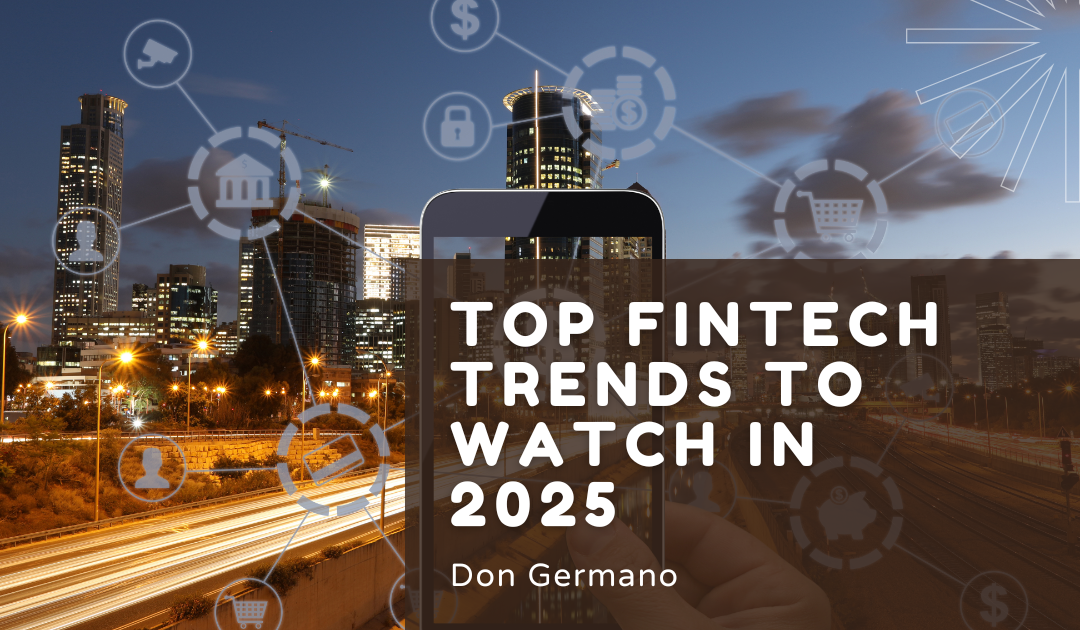As the financial technology (FinTech) sector continues to evolve at a rapid pace, it is clear that innovation is reshaping the future of finance. FinTech’s ability to streamline financial services, enhance security, and provide more accessible solutions for consumers and businesses alike has made it one of the most dynamic and influential industries today. In 2025, several trends are expected to emerge, pushing the boundaries of what’s possible in financial services. From artificial intelligence and blockchain to embedded finance and digital currencies, the landscape will continue to evolve, presenting new opportunities and challenges for businesses and consumers.
One of the most significant trends in FinTech for 2025 will be the increased use of artificial intelligence (AI) and machine learning (ML) to improve decision-making and customer experiences. AI algorithms are already helping financial institutions automate everything from loan approvals to fraud detection, and as these technologies advance, their role will expand. By leveraging large datasets, AI can provide more personalized financial advice, create predictive models for market trends, and optimize investment strategies. In addition to enhancing services, AI-driven chatbots and virtual assistants will become even more integrated into customer interactions, providing immediate and efficient support across digital platforms.
Blockchain technology is also set to play a central role in the FinTech space in 2025. As digital assets and cryptocurrencies continue to grow in popularity, blockchain’s decentralized, transparent, and secure nature offers significant advantages. Blockchain has the potential to streamline cross-border payments, reduce fraud, and lower transaction costs. Financial institutions are already exploring blockchain-based solutions for various applications, including smart contracts, supply chain finance, and secure digital identities. In 2025, we can expect blockchain to become more mainstream, with more companies adopting it to improve efficiency and trust within their financial operations.
Embedded finance is another key trend to watch in 2025. This concept refers to the integration of financial services into non-financial platforms, allowing businesses to offer seamless financial products and services to their customers. Examples of embedded finance include integrated payment solutions in e-commerce platforms or lending features within apps. In 2025, we are likely to see more businesses outside the traditional financial sector offering financial services directly through their platforms. For example, ride-sharing companies might offer insurance to their drivers or retailers might provide credit options at checkout. As consumers demand more convenient, integrated financial solutions, embedded finance will continue to grow.
Digital currencies, particularly central bank digital currencies (CBDCs), are another FinTech development to keep an eye on in 2025. Governments around the world are exploring the potential of CBDCs as a way to modernize their financial systems and address challenges associated with traditional currency management. These government-backed digital currencies aim to combine the stability of fiat money with the efficiency of digital payments. If central banks roll out their digital currencies in the coming years, it could revolutionize how money is stored, transferred, and used, with major implications for global economies and traditional banking systems. CBDCs could provide more affordable, secure, and efficient cross-border payment systems, making international transactions faster and more transparent.
Financial inclusion remains a critical challenge in many parts of the world, and FinTech is well-positioned to address this issue in 2025. The rise of mobile payments, digital wallets, and online lending platforms has already opened up financial access to underserved populations. In 2025, we can expect to see even more FinTech innovations aimed at making financial services more accessible to those who have been excluded from the traditional banking system. With the growing ubiquity of smartphones and internet access, FinTech companies will continue to develop solutions that cater to low-income individuals, rural populations, and people in emerging markets. This could include digital savings accounts, microloans, and mobile insurance products.
Cybersecurity will remain a top priority for the FinTech industry in 2025. As financial transactions become increasingly digital, the threat of cyberattacks continues to rise. FinTech companies will need to invest heavily in robust security measures to protect sensitive customer data and ensure the integrity of financial transactions. Biometric authentication, end-to-end encryption, and advanced fraud detection tools will be crucial in safeguarding users from potential breaches. As cyber threats become more sophisticated, FinTech companies will need to stay ahead of the curve to maintain trust and confidence in their services.
Finally, sustainability and social responsibility are expected to play a larger role in the FinTech industry by 2025. As consumers become more socially conscious, they are increasingly seeking out financial services that align with their values. Green bonds, sustainable investment funds, and socially responsible lending are all areas where FinTech is expected to innovate. More financial products will be designed to help individuals and businesses invest in environmentally sustainable projects or manage their carbon footprint. As environmental, social, and governance (ESG) concerns continue to grow, FinTech companies will need to integrate sustainability into their offerings to meet consumer demand.
As the FinTech landscape continues to evolve in 2025, the industry will be shaped by a combination of technological advancements, consumer demand for more accessible financial solutions, and the need for secure and transparent systems. From AI-driven tools and blockchain to embedded finance and digital currencies, FinTech is poised to redefine the financial services sector, making it more efficient, inclusive, and innovative than ever before.

